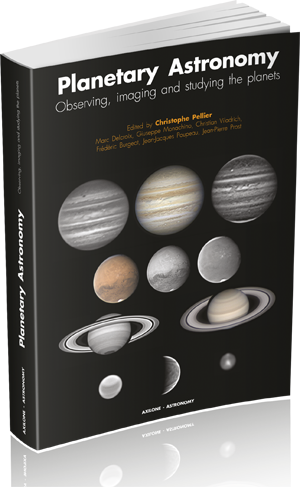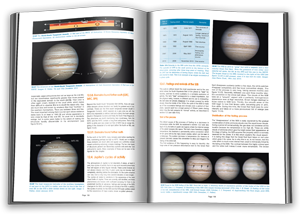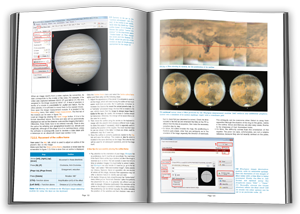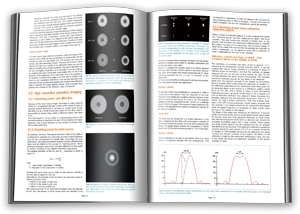Planetary Astronomy
Observing, imaging and studying the planets





- What instrument should I buy, is the one I already own fine for planets?
- How do I correctly set my camera to image planets?
- How deep should I process my images?
- Using WinJupos, should I use video or image derotation?
- What was this very strange detail on Jupiter last night?
- How can I undertake a scientific assessment of my data?
If you ever ask yourself any of these questions (and many others…) you have certainly already looked for informations on the web, or ask people on forums. There are a lot of freely available, valuable information on internet, and many observers are skillful and ready to help you but … Information is highly scattered throughout the net, and is not organized.
Forums are made for people to share ideas or experiences. But then everyone is likely to post and you have no guarantee that they master what they are talking about, and with no guarantee that the persons who have the correct answer will even see your post! In other words, you are losing time looking for information better than having the best advices at hand to simply enjoy your observations!

Planetary Astronomy is a comprehensive book about observing, imaging, and studying planets. It has been written by seven authors, all being skillful amateur observers in their respective domains: Christian Viladrich, Marc Delcroix, Jean-Jacques Poupeau, Frédéric Burgeot, Giuseppe Monachino, and Jean-Pierre Prost. This is a translation and an update of the book Astronomie planétaire which encountered a great success in France since 2015.
With Planetary Astronomy you will learn to:
- Make the best use of your equipment: choosing an instrument, setting correctly the optics of the telescope, setting the camera, using planetary filters, train your eye to see all available details at the eyepiece
- Anticipate weather and seeing conditions, to not lose any good night
- Use in depth the best planetary software: Autostakkert!, Registax, and WinJupos, how to objectively process details and colors
- Identify features on planets: each of the seven planets (but Earth of course) has a detailed chapter that will help you to anticipate cycles of activity on Jupiter, recognize dust storms on Mars, detect bright storms on Uranus or Neptune
- Analyse your data to go beyond simple observations: measuring position and details drifting on planets, making cartographies, participate in advanced observing projects including cooperation with scientists.
Planetary Astronomy is available since December 21, 2020.
Publisher: Axilone – Astronomy
ISBN: 979-10-92974-05-8
Price: 59 EUR shippping included worldwide.
Observing
Throughout the summary:
- Which instrument is best suited for planetary observations ?
- Collimating and evaluating your optics
- Visual observing and drawing
- Forecasting good seeing and choosing an observing site
Imaging
When you want to keep a trail of what you have observed, you can either draw or photograph this wonderful object of the sky that is a planet. Planetary imaging will require you to master the processing technics and softwares, and the use of various accessories. Like observing, imaging is something that you can learn…
Throughout the summary:
- The settings of the camera
- Choosing and using filters for multispectral imaging
- WinJupos’s « derotation » tutorials
- Enhancing details with no noise and artefacts
Studying
Throughout the summary:
- A full description of the martian meteorology
- Understanding the belts, zones and spots of Jupiter
- Mapping and measuring details on planetary disks
- Current and future projects of amateur/professional collaborations
Shipments to the United States suspended
In a major regulatory development, the US government announced on July 30, 2025, the end of the customs tax threshold of 800 USD. This decree now imposes the application and collection of taxes and customs duties from the first dollar before goods enter the U.S. territory, for application from August 29, 2025.
This new requirement has a direct impact on international parcel delivery methods: all DAP (Delivery At Place) shipments will be refused by US customs and not returned to the sender.
We are therefore no longer able to send our books to the United States for an undetermined period of time.